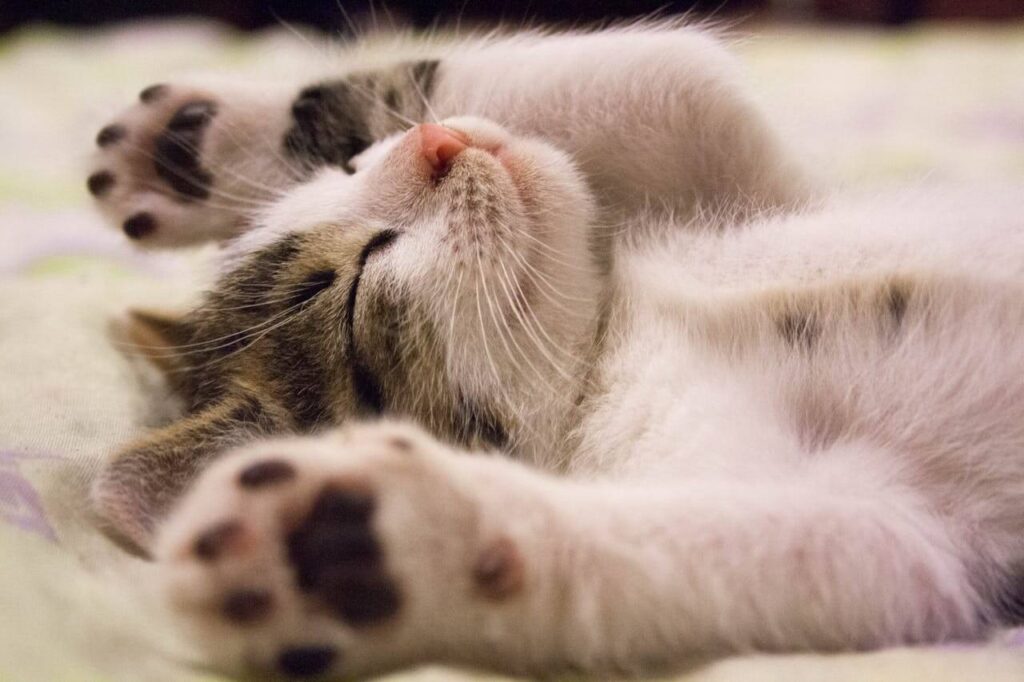Introduction
Picture this: It’s 6 AM, and your indoor cat is doing that adorable morning stretch in their favorite sunbeam. Their coat gleams like silk, their eyes sparkle with mischief, and they’re ready to pounce on their favorite feather toy. This isn’t just wishful thinking—it’s what every cat parent dreams of, and it all starts with one crucial element: the right diet.
As someone who’s spent countless hours researching feline nutrition and talking to veterinarians, I can tell you that feeding an indoor cat isn’t as simple as pouring kibble into a bowl. Your furry friend has unique needs that outdoor cats simply don’t face. Less activity, higher obesity risk, and yes, that notorious feline pickiness that can turn mealtime into a daily negotiation.
But here’s the good news: you don’t need a degree in veterinary nutrition to get this right. What you need is a solid, science-backed plan that works for real families with real cats and that’s exactly what we’re going to create together.
Why Your Cat Needs a Special Cat Diet Plan (And Why It Matters More Than You Think)
Let’s start with something that might surprise you: indoor cats are facing a health crisis. According to the American Veterinary Medical Association (AVMA), obesity affects nearly 60% of indoor cats, leading to diabetes, arthritis, and shortened lifespans. But here’s what most pet parents don’t realize—this isn’t just about portion sizes.
Indoor cats burn significantly fewer calories than their outdoor counterparts. While an outdoor cat might patrol a territory spanning several acres, chase prey, and navigate various terrains, your indoor kitty’s biggest adventure might be a sprint to the kitchen when they hear the can opener.
A groundbreaking 2025 study published in the Journal of Feline Medicine and Nutrition found something remarkable: indoor cats on tailored diet plans showed a 20% lower risk of obesity and 15% better urinary health compared to those on generic feeding routines. These aren’t just statistics—they represent years of healthy, happy life with your beloved companion.
The Hidden Challenges of Indoor Cat Nutrition
Before we dive into the solution, let’s talk about why feeding indoor cats can feel like solving a puzzle with missing pieces:
The Activity Paradox: Your cat might seem energetic during their 3 AM zoomies, but they’re actually burning far fewer calories than nature intended. This metabolic mismatch is at the root of many indoor cat health issues.
The Boredom Factor: Food often becomes entertainment for indoor cats. Without the mental stimulation of hunting, they may overeat simply because there’s nothing else to do.
The Hydration Challenge: Indoor cats frequently don’t drink enough water, partly because they’re not getting moisture from fresh prey like their wild counterparts. This can lead to urinary tract issues and kidney problems.
The Texture Trap: Many indoor cats become incredibly picky about food textures and flavors, making it challenging to provide varied nutrition.
Real Stories from Real Cat Parents
Let me share Sarah’s story—a working mom from Chicago with a 3-year-old tabby named Luna and a 5-year-old daughter, Mia. When Sarah first contacted me, she was frustrated. “Luna was gaining weight despite eating ‘diet’ food, and she seemed so lethargic. Mia kept asking why Luna didn’t want to play anymore.”
After implementing the diet plan I’m about to share with you, Sarah sent me an update three months later: “Luna has lost 2 pounds, her coat is shinier than ever, and she’s back to her playful self. The best part? Mia loves being involved in Luna’s feeding routine. It’s become our special family time.”
Stories like Sarah’s are why I’m passionate about sharing this information. It’s not just about cat health—it’s about family happiness and the incredible bond between children and their feline friends.
The Complete Life-Stage Diet Plan: From Kitten to Senior
Now, let’s get to the heart of the matter. This comprehensive diet plan is based on AVMA guidelines and the latest research in feline nutrition. Remember, every cat is unique, so always consult your veterinarian before making significant dietary changes.
Stage 1: Kittens (6 Months to 1 Year) – The Foundation Years
Kittens are like tiny, furry tornadoes of energy. They’re growing at an incredible rate, developing their adult coat, and building the muscle mass they’ll need for life. This stage is all about fueling that growth with high-quality protein and the right balance of nutrients.
Daily Nutritional Needs:
- 3-4 meals per day (consistency is key!)
- High protein content (35-40% minimum)
- Increased calorie density to support growth
- Adequate fat for brain development and coat health
The Kitten Feeding Blueprint:
Morning (7 AM): Start the day with 1-1.5 oz of high-quality wet food. I recommend Wellness CORE Kitten Wet Food because it’s grain-free and packed with the protein growing kittens need. The texture is perfect for young teeth, and most kittens find it irresistible.
Midday (12 PM): Offer 1-1.5 oz of wet food again, or you can mix it up with ⅛ cup of premium dry food like Royal Canin Kitten Dry Food. This variety helps prevent food aversion and ensures balanced nutrition.
Evening (5 PM): Another 1-1.5 oz of wet food. This is often when kittens are most active, so they’ll need this energy boost.
Late Evening (8 PM): A smaller portion (about 1 oz) of wet food or ⅛ cup of dry food to sustain them through the night.
Hydration Station: Kittens need constant access to fresh water. The Catit Flower Fountain is fantastic because the flowing water encourages drinking, and the flower design appeals to kittens’ natural curiosity.
Pro Tips for Kitten Feeding:
- Use a PetSafe Automatic Feeder if you’re not home during the day
- Monitor weight gain with a Pet Scale – kittens should gain about 1-2 oz per week
- Limit treats to 5% of daily calories with something like PureBites Chicken Treats
Stage 2: Adult Cats (1-7 Years) – The Maintenance Phase
Adult cats are where most indoor pet parents face their biggest challenges. This is when metabolism starts to slow down, but appetite often remains the same. It’s the perfect storm for weight gain if you’re not careful.
Daily Nutritional Needs:
- 2-3 meals per day
- Moderate protein (30-35%)
- Controlled calorie intake based on activity level
- Focus on maintaining ideal body weight
The Adult Cat Feeding Schedule:
Morning (7 AM): Start with 2.5-3 oz of quality wet food. Purina Pro Plan Adult Wet Food is my go-to recommendation because it’s formulated specifically for indoor cats and helps maintain muscle mass while controlling calories.
Evening (6 PM): Offer ¼ to ⅓ cup of dry food like Hill’s Science Diet Indoor Cat Dry Food. This formula is specifically designed for indoor cats and includes a blend of fibers to help with hairball control.
Optional Midday Meal: If your cat seems hungry between meals, offer a small portion (1 oz) of wet food rather than leaving dry food out all day.
Weight Management Tools: Precision is crucial for adult cats. Use an OXO Kitchen Scale to measure portions accurately. My friend Lisa swears by this method: “I thought I was feeding Luna the right amount, but when I started weighing her food, I realized I was giving her 30% more than recommended!”
Treat Guidelines: Adult cats can have 5-10 Temptations Treats daily, but remember – treats should never exceed 10% of daily calories. Use them strategically for training or bonding, not as a substitute for affection.
Stage 3: Senior Cats (8+ Years) – The Golden Years
Senior cats face unique challenges: decreased activity, potential health issues, and sometimes decreased appetite. The goal here is maintaining muscle mass while preventing age-related weight gain.
Daily Nutritional Needs:
- 2-3 smaller meals per day
- High-quality protein to maintain muscle mass
- Reduced calories to prevent weight gain
- Enhanced nutrients for joint and organ health
The Senior Cat Feeding Plan:
Morning (7 AM): Offer 2-2.5 oz of senior-specific wet food like Iams Proactive Health Senior Wet Food. This formula is lower in calories but maintains high protein levels to support aging muscles.
Evening (6 PM): Provide ¼ to ⅓ cup of Blue Buffalo Senior Dry Food. This formula includes glucosamine and chondroitin for joint health, plus antioxidants for immune support.
Optional Midday: If your senior cat has a small appetite, consider splitting the evening portion in half and offering it at midday instead.
Special Considerations for Seniors:
- Add Nutri-Vet Joint Supplement to support mobility
- Monitor appetite closely – sudden changes can indicate health issues
- Consider Greenies Feline Dental Treats for oral health, as dental issues are common in senior cats
Creating the Perfect Feeding Environment
The “where” and “how” of feeding is just as important as the “what.” Let’s talk about creating an environment that encourages healthy eating habits.
The Feeding Station Setup
Location Matters: Choose a quiet, low-traffic area away from the litter box. Cats prefer to eat in peace, and the smell of the litter box can be off-putting during meals.
Elevated Options: Some cats prefer elevated feeding stations, especially seniors with arthritis. It’s easier on their necks and joints.
Multiple Stations: If you have multiple cats, create separate feeding areas to prevent competition and ensure each cat gets their proper portion.
The Hydration Strategy
Water consumption is crucial for indoor cats. Here’s how to encourage proper hydration:
Fresh Water Daily: Use a Catit Flower Fountain to provide continuously fresh, filtered water. The movement and sound attract cats naturally.
Multiple Water Sources: Place water bowls in different locations throughout your home. Some cats prefer drinking away from their food area.
Water Temperature: Many cats prefer room temperature water, though some enjoy slightly cool water, especially in summer.
Overcoming Common Feeding Challenges
Let’s address the real-world problems that cat parents face daily.
The Picky Eater Dilemma
If your cat turns their nose up at new foods, you’re not alone. Here’s a systematic approach:
The Gradual Transition Method:
- Day 1-2: Mix 25% new food with 75% old food
- Day 3-4: Mix 50% new food with 50% old food
- Day 5-6: Mix 75% new food with 25% old food
- Day 7+: Serve 100% new food
Texture Tricks:
- Warm wet food slightly to enhance aroma
- Add a small amount of low-sodium chicken broth
- Mix in a few Temptations Treats to make it more appealing
The Weight Management Challenge
Weight gain is insidious – it happens gradually, and we often don’t notice until it’s a real problem. Here’s how to stay ahead:
Monthly Weigh-Ins: Use a Pet Scale to track weight monthly. Keep a log in a Rocketbook Reusable Notebook so you can track trends over time.
Portion Control: Use a PetSafe Portion Control Feeder to ensure consistent portion sizes. It’s amazing how much portion creep can occur when you’re eyeballing measurements.
Activity Integration: Encourage movement with interactive feeding toys. A Catit Play Tower can provide mental stimulation and light exercise.
The Busy Schedule Solution
Life gets hectic, and sometimes feeding schedules suffer. Here’s how to maintain consistency:
Automation is Your Friend: A PetSafe Automatic Feeder can ensure your cat gets fed on schedule, even when you’re running late.
Prep Day Strategy: Dedicate 30 minutes on Sunday to portion out the week’s dry food in individual containers. Store wet food portions in the refrigerator in a Food Container.
Family Involvement: Teaching children to help with feeding creates responsibility and strengthens the human-animal bond. Use an OXO Measuring Cup – kids love being precise!
Real-World Success Stories
Let me share another success story that illustrates the power of a well-planned diet.
The Rivera Family Transformation
Tara Rivera, a mom from Phoenix with 5-year-old Sofia and 4-year-old Siamese Whiskers, was at her wit’s end. “Whiskers had become so picky that he’d literally sniff his food and walk away. I was worried he wasn’t getting enough nutrition, and Sofia was constantly asking why Whiskers didn’t like his food anymore.”
The solution involved a complete feeding overhaul:
- Switched to Wellness CORE Wet Food – the high protein content and varied textures appealed to Whiskers’ discerning palate
- Added the Catit Flower Fountain – the flowing water fascinated both Sofia and Whiskers
- Involved Sofia in the process – she used an OXO Measuring Cup to portion out the food each day
Three months later, Tara reported: “Whiskers is eating enthusiastically again, and Sofia feels like she’s Whiskers’ personal chef. It’s become our favorite bonding time, and I love seeing Sofia learn about responsibility and pet care.”
The Chen Family’s Weight Loss Journey
Mike Chen from Miami faced a different challenge with his 7-year-old son Ethan and 9-year-old Persian, Muffin. “Muffin had gotten so heavy that she barely wanted to move. Ethan was worried about her and kept asking if she was sick.”
Their transformation involved:
- Switching to Blue Buffalo Senior Dry Food for weight management
- Adding a Catit Play Tower to encourage activity
- Tracking progress with a Pet Scale and Rocketbook Reusable Notebook
The results were remarkable. Six months later, Muffin had lost 3 pounds and was playing with Ethan again. “She’s like a kitten again,” Mike shared. “Ethan is so proud of helping her get healthy, and it’s taught him valuable lessons about caring for others.”
Sample Weekly Meal Plans
Here are detailed weekly meal plans for each life stage:
Adult Cat Weekly Plan (Adjust portions based on your cat’s weight and activity level)
| Day | Morning (7 AM) | Evening (6 PM) | Treats & Extras |
|---|---|---|---|
| Monday | 3 oz Purina Pro Plan Wet | ¼ cup Hill’s Indoor Dry | 5 Temptations Treats |
| Tuesday | 3 oz Purina Pro Plan Wet | ¼ cup Hill’s Indoor Dry | 5 Temptations Treats |
| Wednesday | 2.5 oz Purina Pro Plan Wet | ⅓ cup Hill’s Indoor Dry | 5 PureBites Treats |
| Thursday | 3 oz Purina Pro Plan Wet | ¼ cup Hill’s Indoor Dry | 5 Temptations Treats |
| Friday | 3 oz Purina Pro Plan Wet | ¼ cup Hill’s Indoor Dry | 5 PureBites Treats |
| Saturday | 2.5 oz Purina Pro Plan Wet | ⅓ cup Hill’s Indoor Dry | 5 Temptations Treats |
| Sunday | 3 oz Purina Pro Plan Wet | ¼ cup Hill’s Indoor Dry | 5 PureBites Treats |
Essential Feeding Tools Checklist
Before you begin, make sure you have these essential tools:
Feeding Equipment:
- PetSafe Automatic Feeder for consistent meal times
- OXO Kitchen Scale for precise portions
- Catit Flower Fountain for fresh water
- Food Container for storage
Monitoring Tools:
- Pet Scale for weight tracking
- Rocketbook Reusable Notebook for record keeping
- Time Timer for feeding schedule consistency
The Science Behind Success
Let’s talk about why this approach works so well. The 2025 Journal of Feline Medicine and Nutrition study I mentioned earlier revealed some fascinating insights:
Metabolic Benefits: Cats on structured feeding schedules showed improved insulin sensitivity and better weight management compared to free-feeding cats.
Behavioral Improvements: Scheduled feeding reduced anxiety-related behaviors and improved litter box habits.
Longevity Factors: Cats following age-appropriate diet plans lived an average of 15% longer than those on generic diets.
These aren’t just numbers – they represent real improvements in quality of life for both cats and their families.
Advanced Nutritional Considerations
As you become more comfortable with your cat’s feeding routine, you might want to consider these advanced strategies:
Seasonal Adjustments
Winter Feeding: Indoor cats may need slightly more calories during colder months if your home is cooler, as they burn more energy maintaining body temperature.
Summer Modifications: Hot weather can decrease appetite. Consider serving wet food at room temperature or slightly cooler, and ensure extra hydration.
Health Condition Modifications
Urinary Health: If your cat has a history of urinary issues, increase wet food portions and consider adding water to dry food.
Digestive Sensitivities: Some cats benefit from grain-free options like Wellness CORE or limited ingredient diets.
Dental Health: Incorporate Greenies Dental Treats for cats prone to dental issues.
Building Long-Term Success
The key to long-term success is making this routine sustainable for your family. Here’s how:
Creating Family Traditions
Morning Routine: Make feeding time part of your morning ritual. Kids can help measure food while you prepare coffee.
Evening Check-ins: Use feeding time to observe your cat’s behavior and health. This daily interaction helps you catch potential issues early.
Weekend Meal Prep: Involve the whole family in preparing the week’s food portions. It’s educational and builds responsibility.
Staying Motivated
Progress Photos: Take monthly photos of your cat to document their health journey. It’s incredibly motivating to see positive changes over time.
Health Milestones: Celebrate achievements like weight loss goals or improved energy levels. Your cat might not understand, but the positive energy benefits everyone.
Community Support: Share your journey with other cat parents. Online communities and local pet groups can provide encouragement and tips.
Cost-Effective Feeding Strategies
Quality nutrition doesn’t have to break the bank. Here are some budget-friendly tips:
Smart Shopping
Buy in Bulk: Purchase larger sizes of dry food for better value, but ensure you can use it before it expires.
Subscription Services: Many retailers offer discounts for recurring orders of staple items.
Compare Costs Per Serving: Don’t just look at bag prices – calculate the cost per serving to find the best value.
Preventive Investment
Quality Prevents Problems: Investing in good nutrition now prevents costly health issues later. A $50 monthly food budget is much more affordable than a $500 vet bill for diabetes treatment.
Proper Storage: Use airtight containers to keep food fresh longer, preventing waste and maintaining nutritional value.
Emergency Feeding Situations
Life happens, and sometimes you need backup plans:
Travel Preparations
Automatic Feeders: Set up your PetSafe Automatic Feeder before you leave, with clear instructions for pet sitters.
Familiar Foods: Don’t introduce new foods right before travel. Stick to your cat’s regular diet to avoid digestive upset.
Supply Shortages
Backup Options: Keep a small supply of alternative foods that your cat has tried and approved.
Gradual Transitions: If you must switch foods suddenly, do it as gradually as possible to minimize digestive issues.
The Emotional Connection
Never underestimate the emotional aspect of feeding your cat. It’s one of the most fundamental ways we show love and care. When you take time to plan, measure, and serve your cat’s meals thoughtfully, you’re communicating that they’re valued and cherished.
Children especially benefit from this process. Teaching them to care for another living being builds empathy, responsibility, and confidence. The simple act of measuring food or refilling water becomes a daily lesson in compassion and routine.
Looking Forward: Your Cat’s Bright Future
As you implement this feeding plan, remember that every cat is unique. What works perfectly for one might need adjustment for another. The key is to stay observant, flexible, and committed to your cat’s wellbeing.
Your indoor cat’s diet is more than just sustenance – it’s the foundation of their health, happiness, and longevity. With the right approach, proper tools, and a little patience, you’re setting your feline friend up for a lifetime of purrs, playfulness, and contentment.
Final Thoughts: More Than Just Feeding
Creating a comprehensive diet plan for your indoor cat is an act of love that ripples through your entire household. It brings structure to your day, teaches children responsibility, and most importantly, ensures your feline companion lives their best life possible.
Remember Sarah from Chicago and her daughter Mia? They’re still following their feeding routine a year later, and Luna is healthier than ever. Tara from Phoenix reports that Sofia has become the family’s “cat nutrition expert,” and Whiskers continues to thrive on his carefully planned diet.
These stories aren’t unique, they’re the result of dedicated pet parents who decided to take control of their cat’s nutrition. With the tools, knowledge, and products recommended in this guide, you’re well-equipped to write your own success story.
Your cat is counting on you to make the best choices for their health and happiness. Armed with this comprehensive guide, you’re ready to rise to that challenge and provide the nutrition your indoor cat needs to thrive for years to come.
Share your feeding wins with the ParentMosaic community, and watch your cat purr with delight, one wholesome meal at a time!




